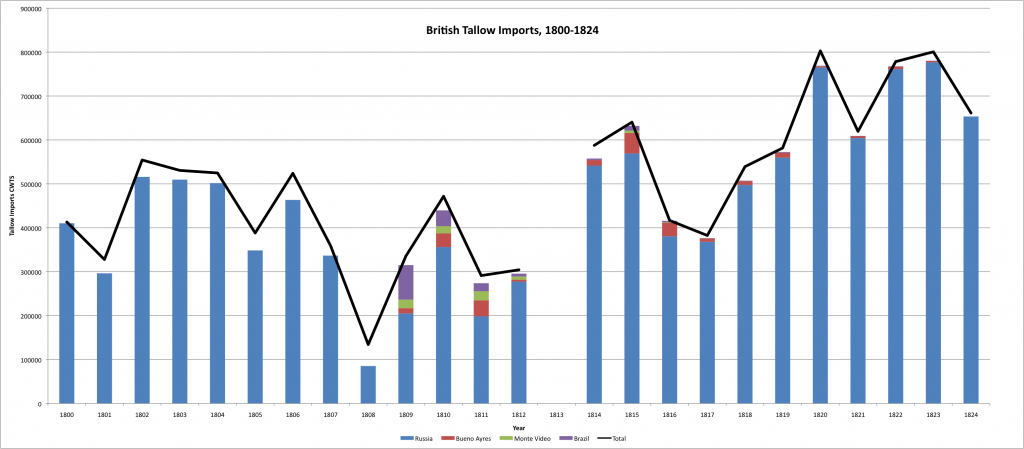Soap’s Ghost Pastures
British soap makers relied on a growing supply of fats, potash, and pine resin from overseas locations beginning in the eighteenth century. Much like the overseas “ghost acres” of wheat and sugar that augmented Britain’s food supply, soap manufacturers relied on tallow from expansive ghost pastures, which spread across much of the world’s natural grasslands at various points in the nineteenth century. Palm, coconut and cottonseed oils, which were also imported from around the world, increasingly competed with tallow in soap making, but they appear to have transformed significantly fewer acres of land when compared to the massive scale of cattle and sheep farming. In researching the global supply-chains of London’s soap industry for a recent conference paper and future journal article, I’ve become particularly interested in the changing geography of Britain’s tallow imports.

The graph above demonstrates that the majority of Britain’s tallow imports came from Russia during the early nineteenth century. While the Argentine Republic and Uruguay became significant exporters, they did not challenged Russia’s dominance during the first half of the century.